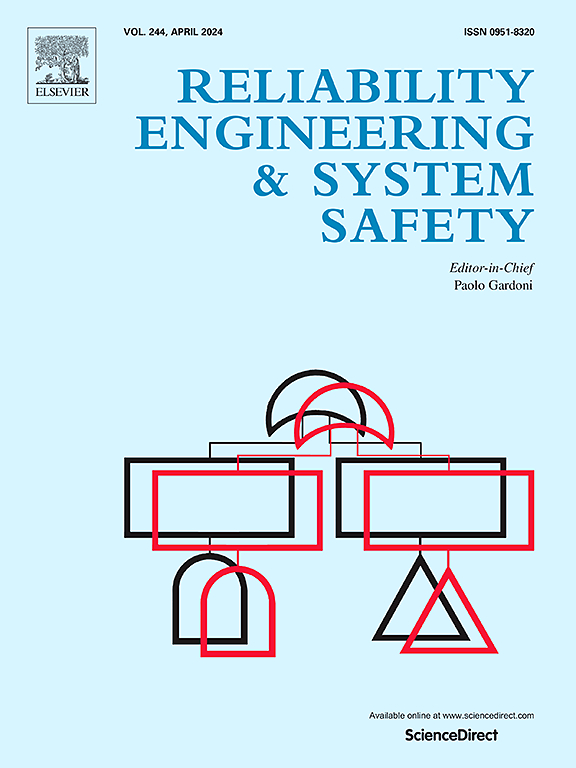Early prediction of battery life using an interpretable health indicator with evolutionary computing
IF 9.4
1区 工程技术
Q1 ENGINEERING, INDUSTRIAL
引用次数: 0
Abstract
Accurate prediction of battery lifespan is crucial for optimizing energy management, enhancing safety, and ensuring system reliability, particularly when only early-stage battery data is available. Health indicators (HIs) play a pivotal role in monitoring battery degradation by providing a link between the current state and the battery's end of life (EOL). However, existing methods for HI extraction often depend on extensive expert knowledge, large volumes of lifecycle data, and complex models to map HIs to battery lifespan. This study introduces an intelligent and interpretable methodology for generating HIs using improved genetic programming (GP) to enable rapid and precise battery lifespan prediction based solely on data from two early discharge cycles. Four HI candidates are derived from statistical features of the differences between discharge voltage curves. Unlike conventional methods that employ root mean square error (RMSE) as a fitness function, we introduce a novel correlation-based fitness function using cosine similarity within GP. This approach generates a transparent composite mathematical formula for extracting interpretable HIs. It automatically filters irrelevant HI candidates and combines relevant ones through specific mathematical operations. The resulting composite mathematical expression, universally applicable for constructing interpretable HIs across various cycle selections, enables rapid and early battery lifespan prediction through regression models. Validation on 124 battery cells shows that the proposed composite HI, expressed as an explicit mathematical function, achieves a mean absolute percentage error of approximately 15 % when predicting battery lifespan using data from just two cycles within the first 20 cycles across diverse operating conditions. Moreover, the proposed approach surpasses benchmark HIs in both prediction accuracy and stability across different regression models.
求助全文
约1分钟内获得全文
求助全文
来源期刊

Reliability Engineering & System Safety
管理科学-工程:工业
CiteScore
15.20
自引率
39.50%
发文量
621
审稿时长
67 days
期刊介绍:
Elsevier publishes Reliability Engineering & System Safety in association with the European Safety and Reliability Association and the Safety Engineering and Risk Analysis Division. The international journal is devoted to developing and applying methods to enhance the safety and reliability of complex technological systems, like nuclear power plants, chemical plants, hazardous waste facilities, space systems, offshore and maritime systems, transportation systems, constructed infrastructure, and manufacturing plants. The journal normally publishes only articles that involve the analysis of substantive problems related to the reliability of complex systems or present techniques and/or theoretical results that have a discernable relationship to the solution of such problems. An important aim is to balance academic material and practical applications.
 求助内容:
求助内容: 应助结果提醒方式:
应助结果提醒方式:


